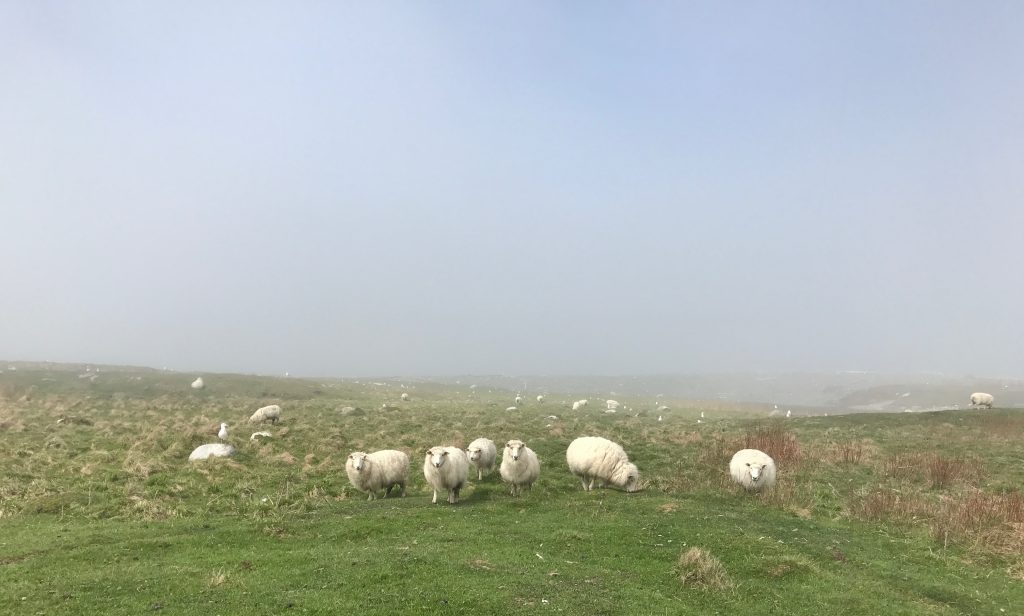
Nash is an island in Maine inhabited only by sheep. Sheep and gulls. Once upon a time, a hundred years ago, a family lived in a lighthouse on the next tiny island, and the lighthouse keeper’s daughter Jenny, kept a flock of sheep. The descendants of these sheep still live on these islands, all by themselves, with the gulls. The islands lie in the middle of the blue of the sea and the blue of the sky. They are nearly flat, with no trees, only brambles, short grasse and bog. Stony grey beach surrounds them, strewn with seaweed and bleached driftwood.
It’s a magical place.
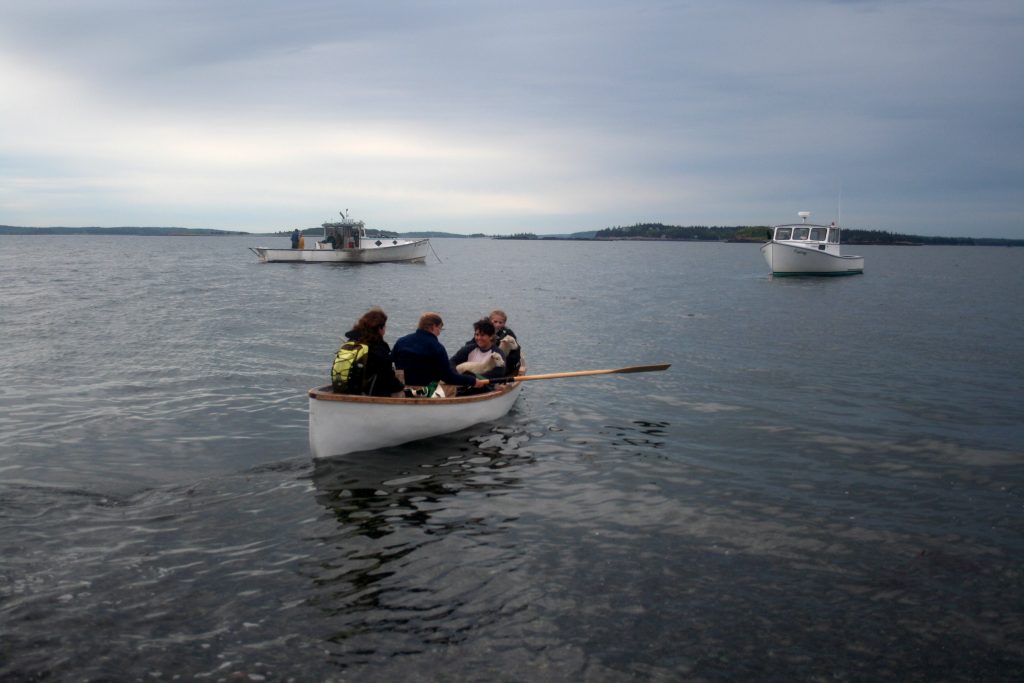
Every year, this community of sheep is invaded by another community. A small flotilla of lobster boats arrive with a lively crew of humans set for shearing the flock’s lovely fog washed fleece. They’ve been doing it for years, the same group of people, family, old friends, a smattering of new friends. As people wade ashore, unloading the boats by passing needed supplies hand to hand, the sheep take one look and head for the far side of the island – having none of it.

Coffee and breakfast breads lure the folk together so Alfie Wakeman can explain the drill. As a child he summered nearby and became close friends with Jenny Cirone, the shepherdess. She taught him how to lobster fish and they fished and tended her sheep together until she died at 91. Jenny gave the islands and sheep over to Alfie and he and his family have been the stewards ever since, doing things the way Jenny always did them.
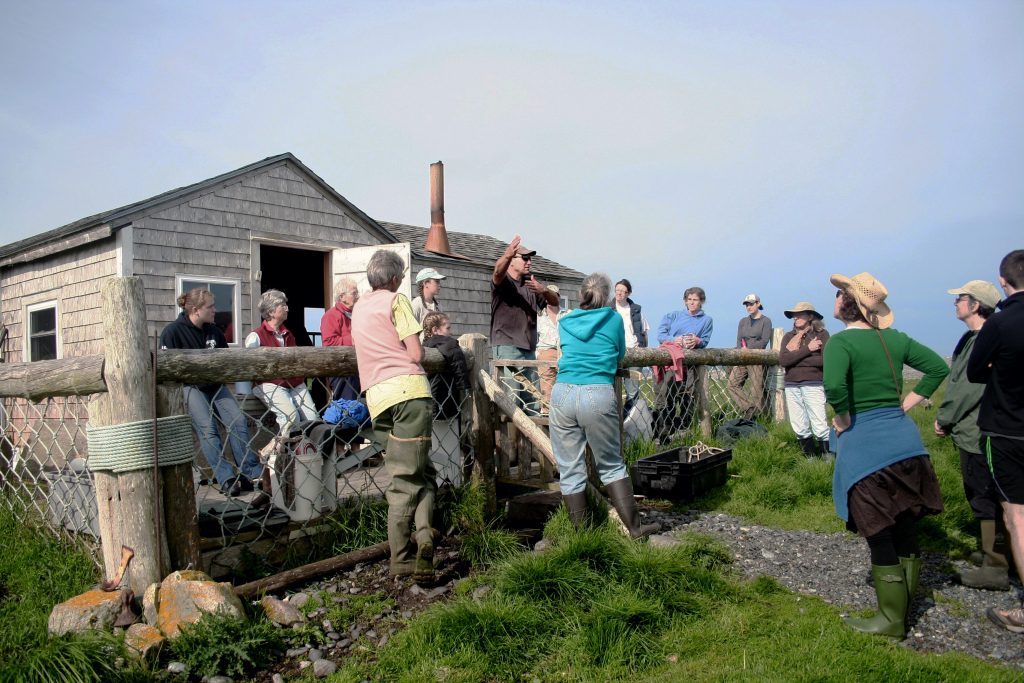
Rounding up the sheep is done without dogs, only people. Alfie explains the time tested strategy. A couple of runners, head out to circle the edge of the island, herding the sheep along the coast, while separate teams of people hide in clumps in the bog and field, trying their best to look like rocks.
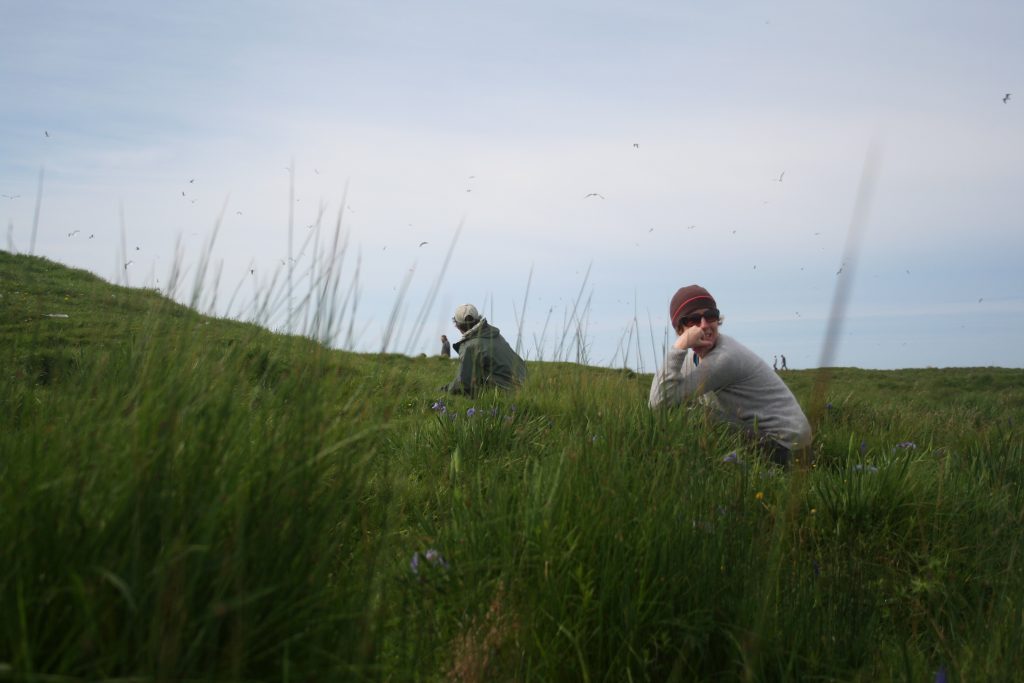
As the sheep pass them, these teams stand up and stretch their arms wide to discourage the sheep from retreating or heading inland. As more groups stand up, all move forward in wide-armed paper doll lines, encouraging the sheep into the weathered pens by the shore.
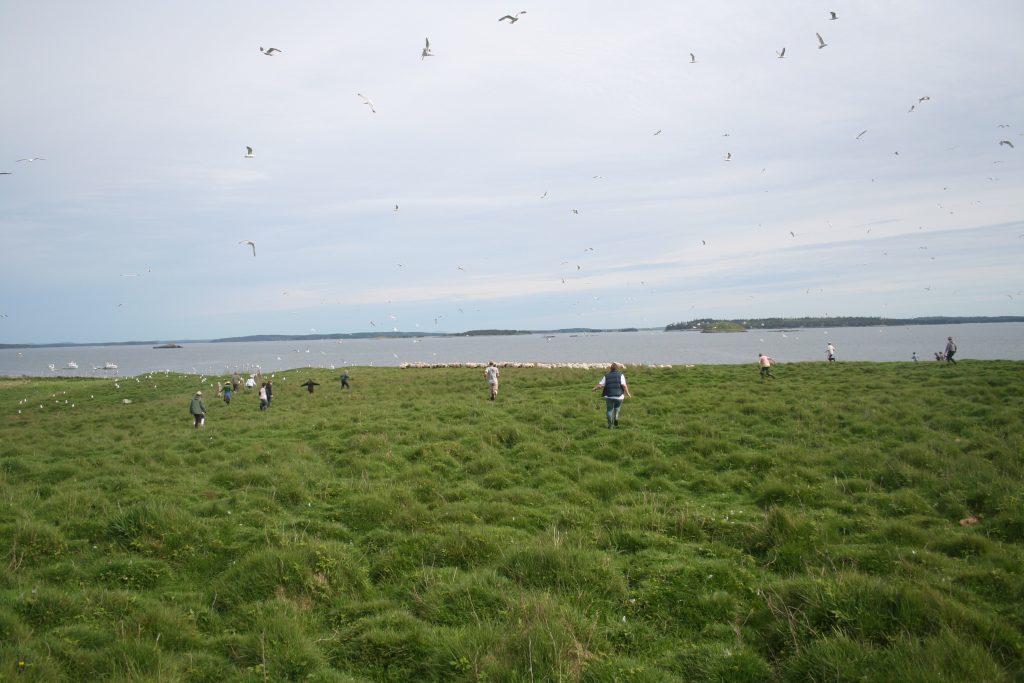
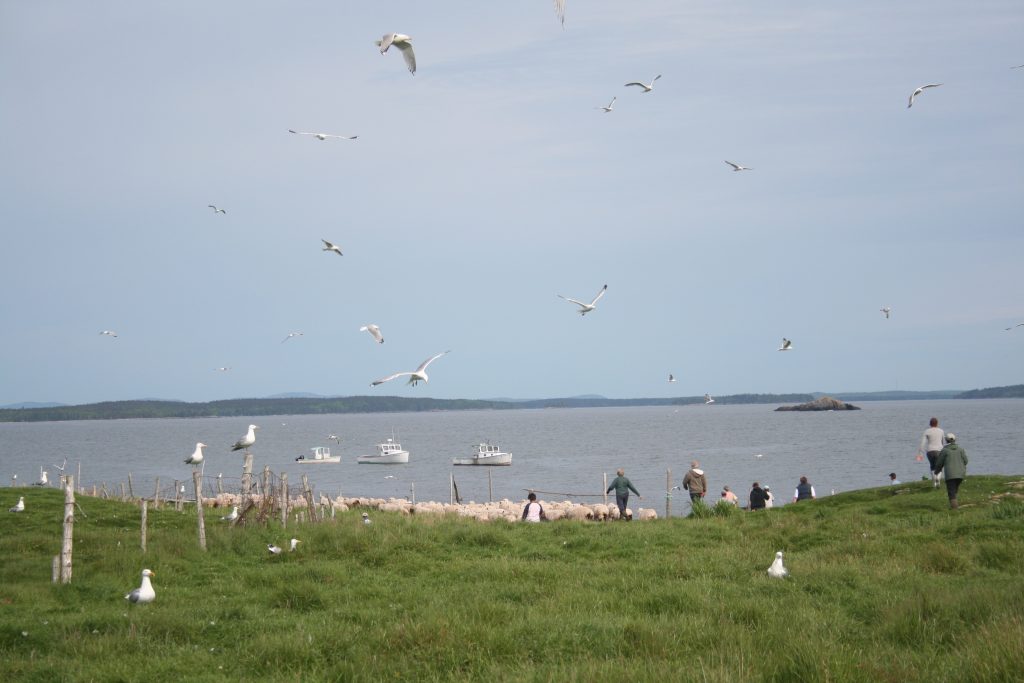
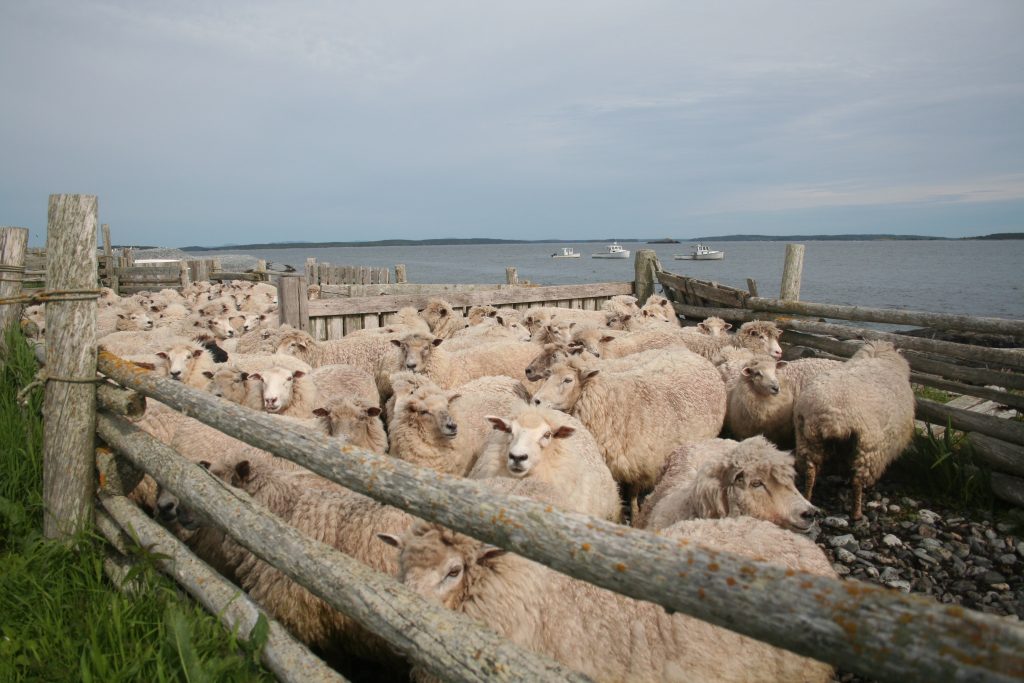
Now the real work begins. Separating the lambs from their mothers, “lamb tossing” is a lively and challenging operation. Fearless teenagers grab lambs from amidst the mass of wooly baaing ewes and hand them over the fence where they are passed off to someone else who carries the flailing lamb – all pink ears and sharp little hooves – over to another person situated in the lamb pen.
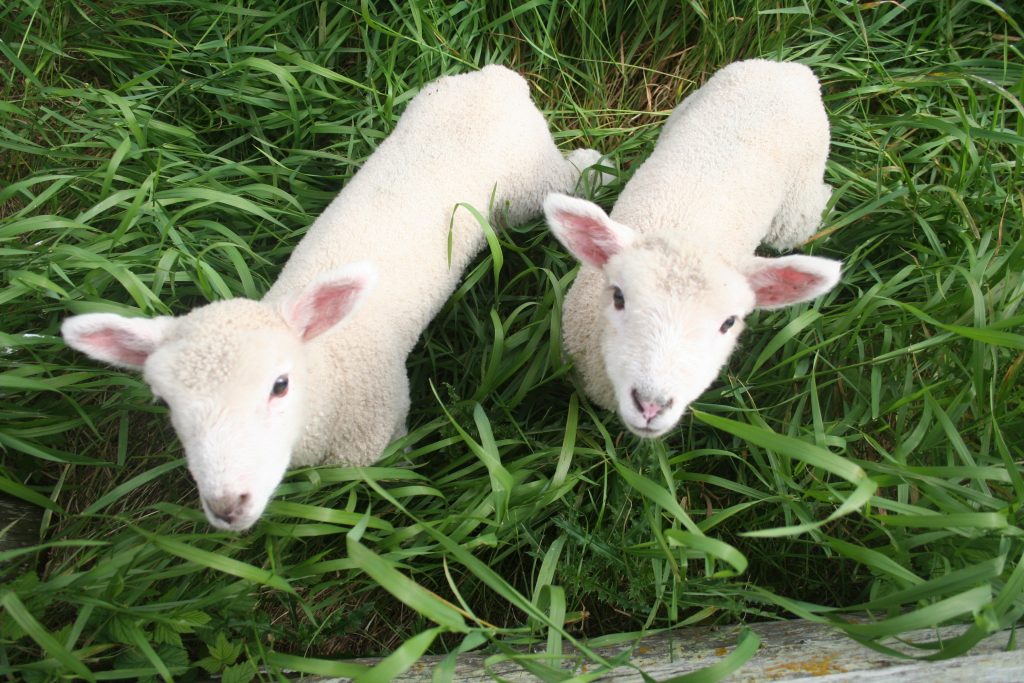
Here they are checked and administered to and set free. The mothers are not happy with this situation. Their crying and calling out to their babies will continue all day.
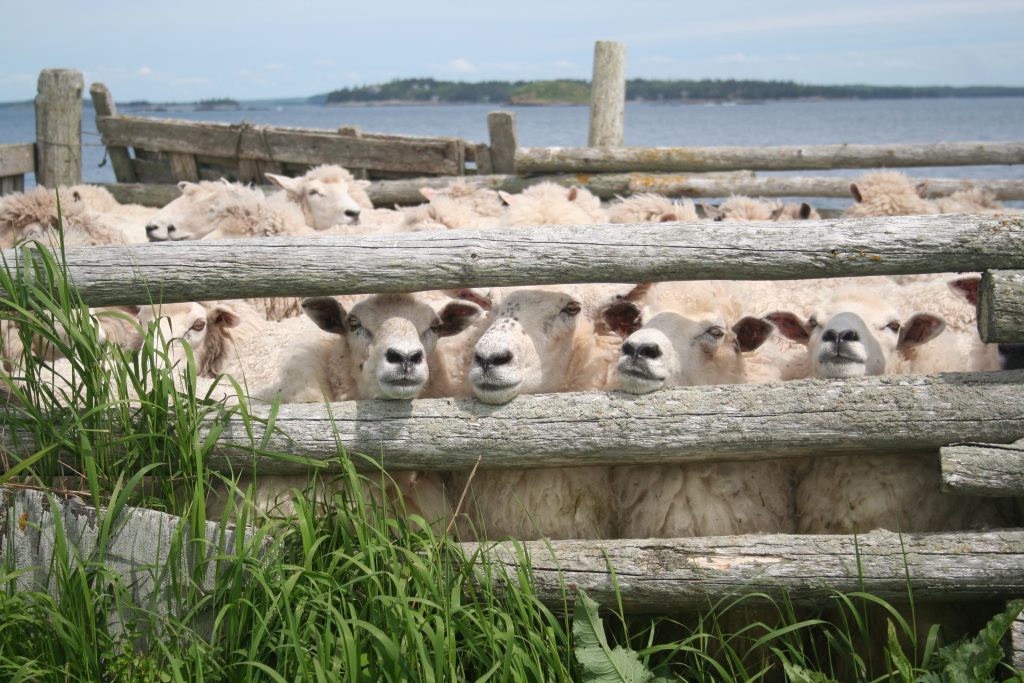
The shearing itself is spectacular. Four amazing women on the mats, shears sharpened. Donna Kausen and Geri Valentine have each been shearing for 35+ years, while Eleni, Alfie’s wife has been at it for 8 and 2016 was their eldest daughter Wren’s second. Their strength, stamina and precision is astounding.The sheep are wrangled one by one out of the pens and onto the mats, grabbed by the shearer and together with the wrangler put on their rumps, and clamped between the shearers legs.
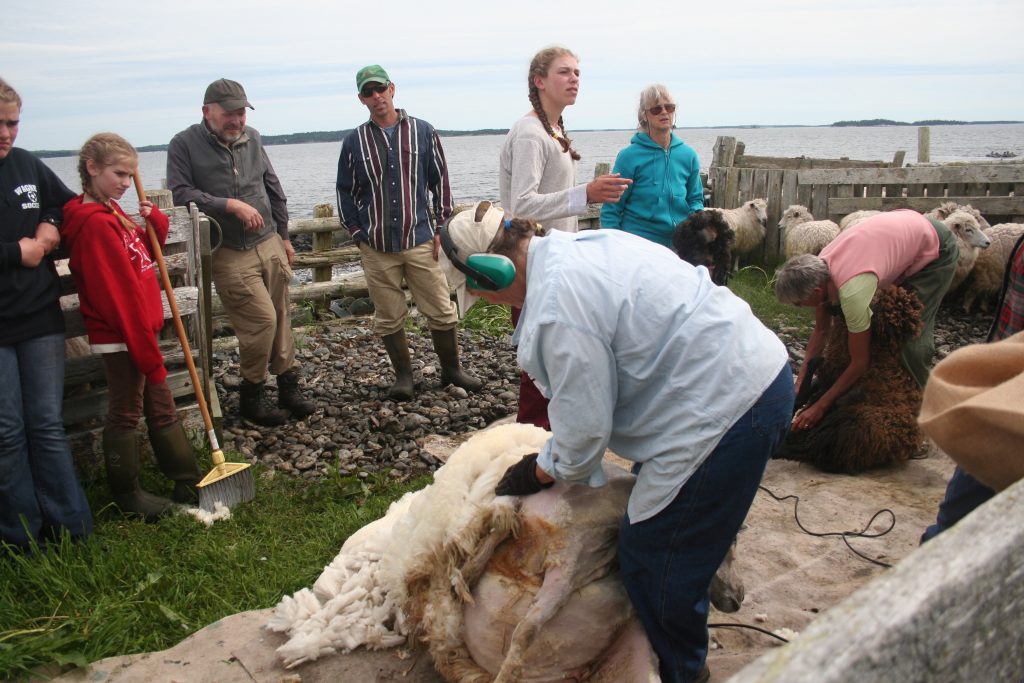
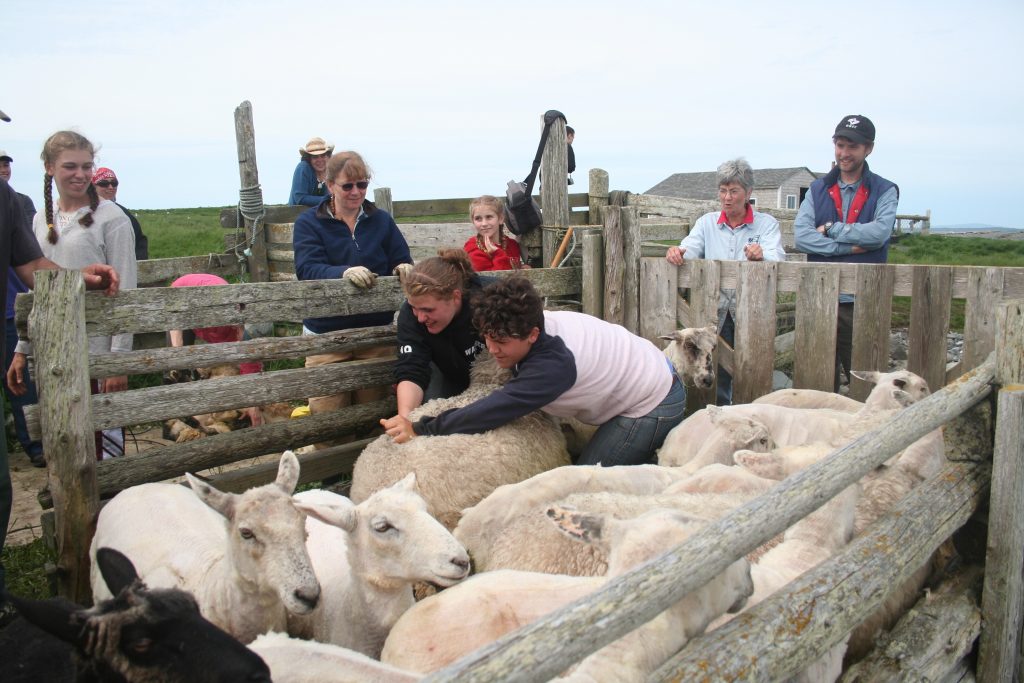
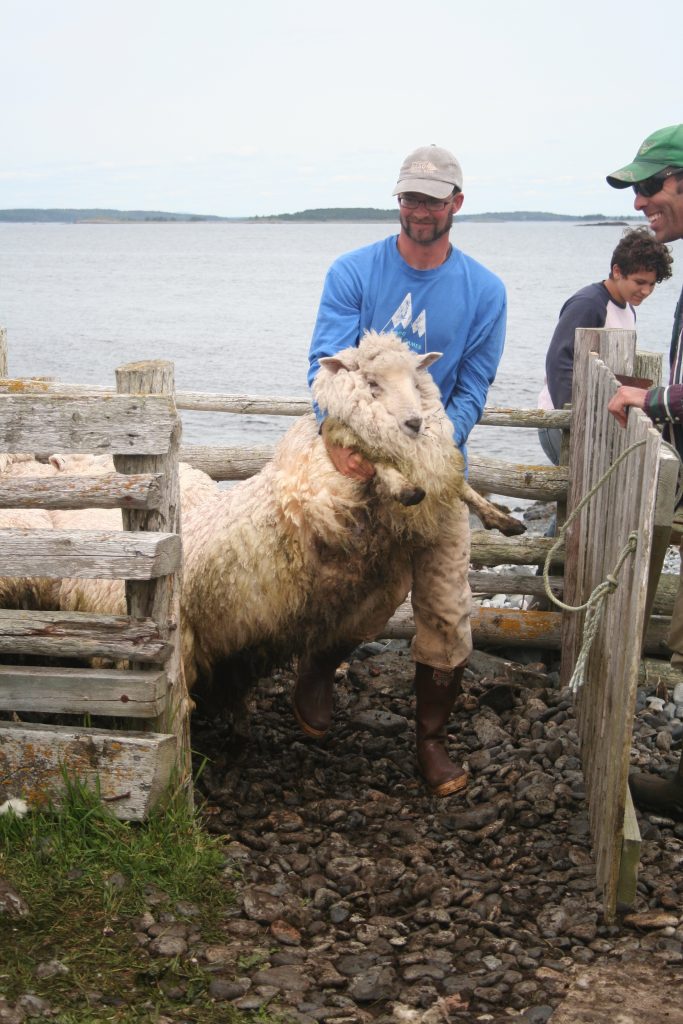
Alongside the shearer is the specialized job of “shit picking,” getting the worst of the soiled fleece away from the good parts. Shit-pickers must be nimble, act quickly and not get in the way of the shearers or wranglers. In between shearing the sweeper keeps the mats clean with a quick pass of the broom.
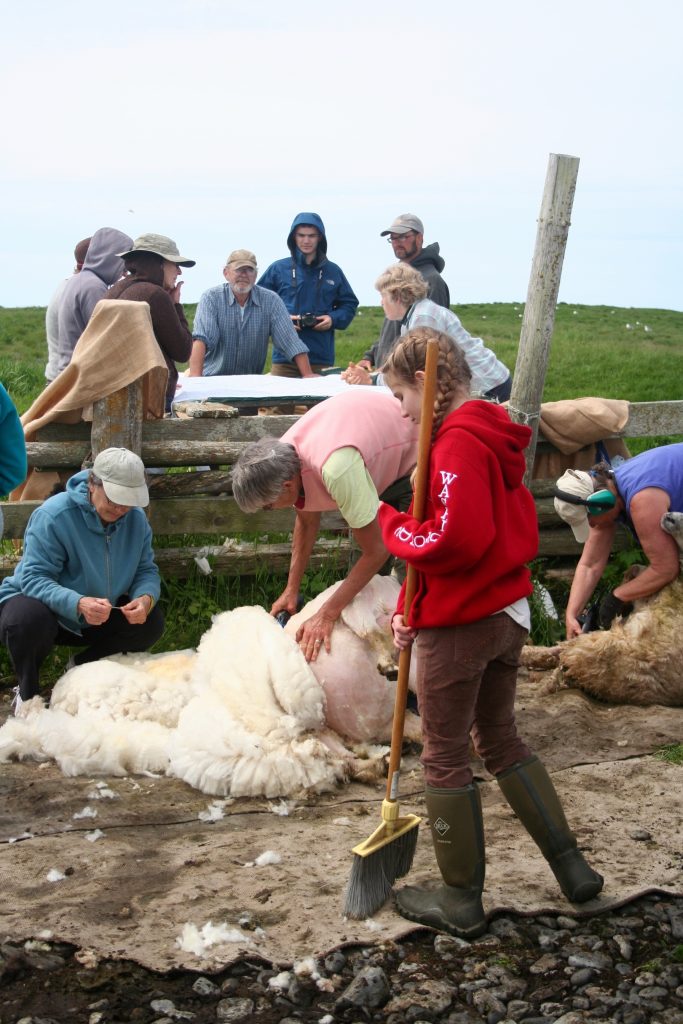
The newly shorn fleeces are handed over to Jani Estell, island wool manager and owner of Starcroft Fiber Mill, a gem – my hero – with a sly smile, sparkly eyes and dry wit, who never seems to hurry yet keeps the whole show going.
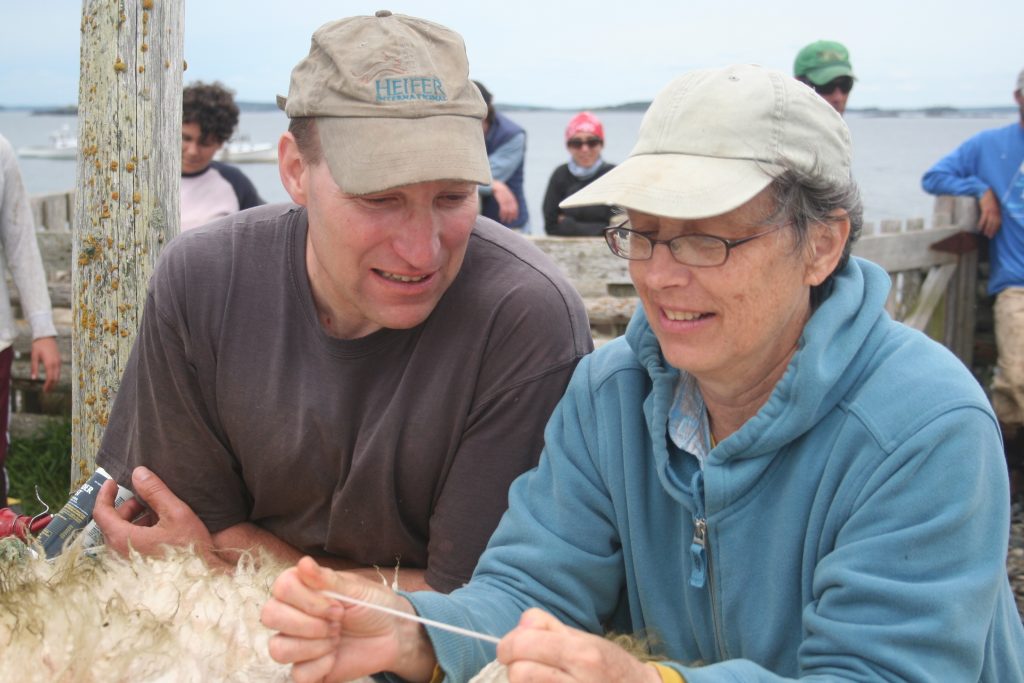
She has a special touch for sorting fleeces. Fleeces with the longest staple fiber, shiny and lustrous are reserved for hand spinning (sold before they are even off the animals). The soft silky first shearing lamb fleece are for her very special Fog yarn. The prime ewe fleece, long and soft with a fine crimp are for Nash Island Light, a luscious worsted weight yarn. Soft bouncy fleece that’s “scoodgy” (a made up word because one was lacking) and crimped is for Tide, the dk weight yarn often used for colorwork. No island wool is wasted, anything that does not make the grade is used for felting fiber – reported to be the best out there.
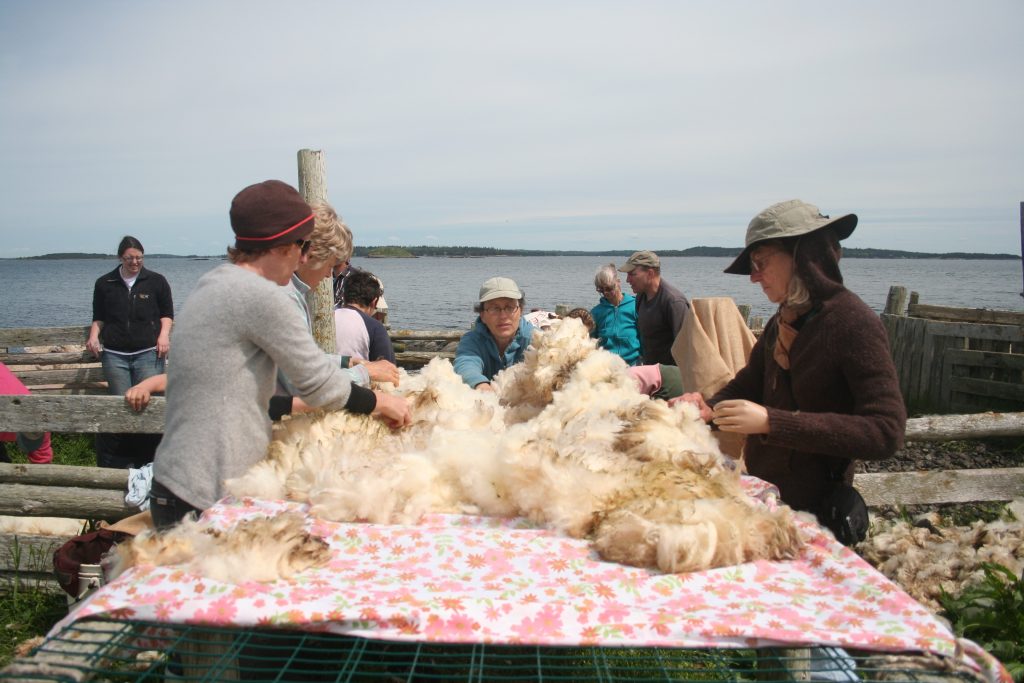
As Jani calls out the grade, the fleeces fly on the skirting table where a small legion of fiber enthusiasts skirt them. Though the island lifestyle keeps the fleeces incredibly clean, there are still odd bits of brambles, seaweed and soiled areas that must be pulled out. The fleeces are carefully rolled up in vintage floral sheets, labeled and later put into huge burlap bags. Jani will hand skirt every fleece a second time when they get to her mill.
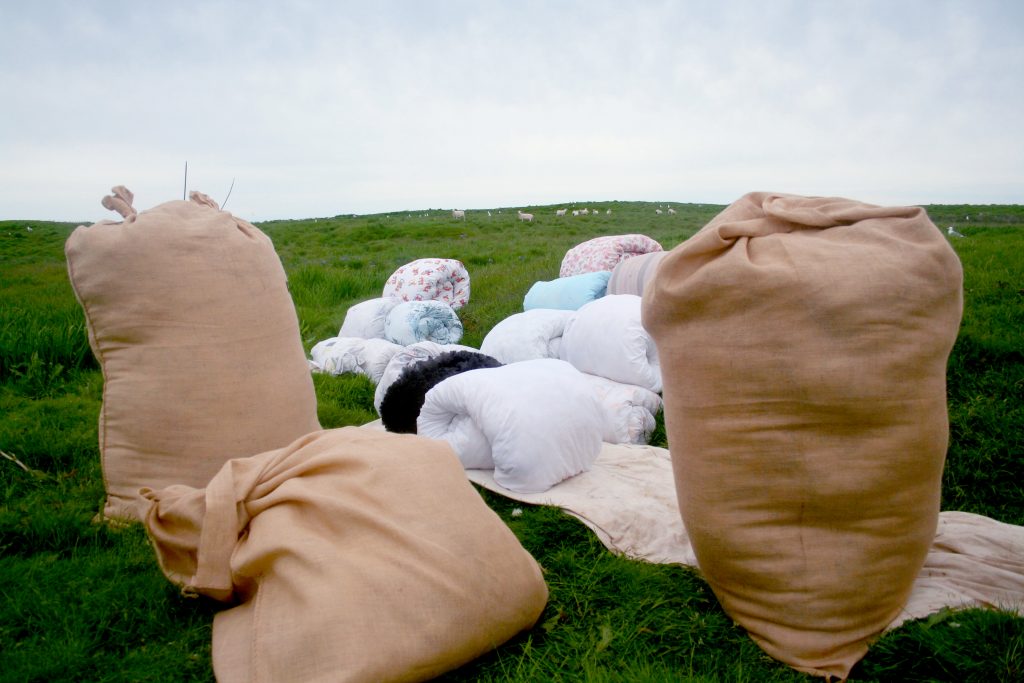
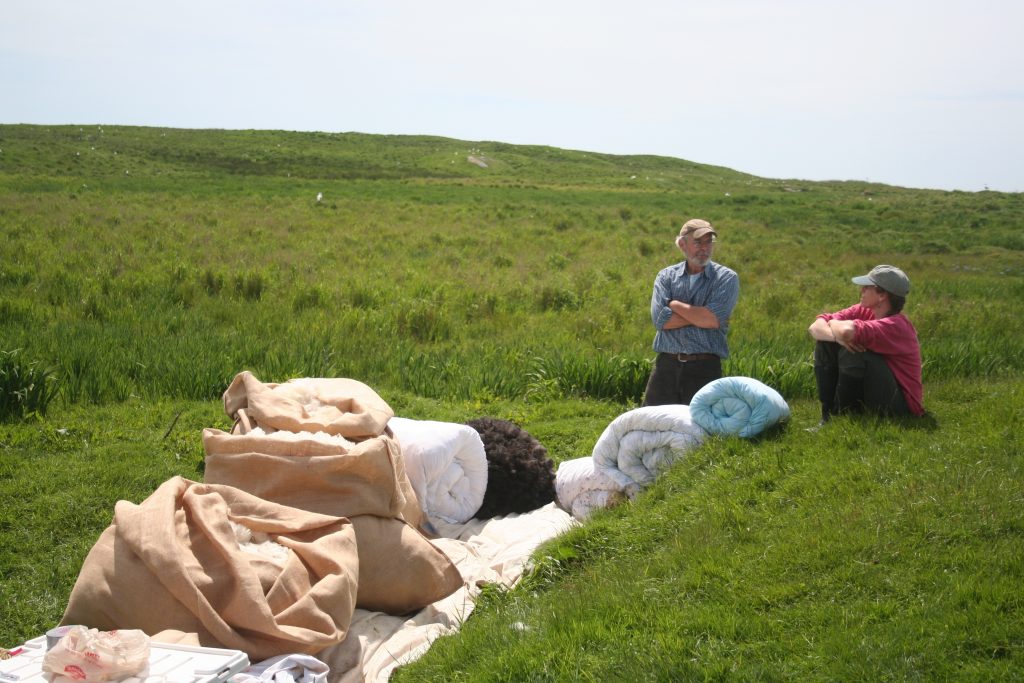
When the sun is directly overhead it’s time to break for an unbelievable potluck spread. Shearers eat first! After refueling and resting the shearing will continue. When finally finished and the sun approaches the waterline, the whole crowd will load the boats with fleece and gear and head for the mainland happy and satisfied with a job well done. The final task of the day is dropping the rams off on a different smaller island to spend the summer away from the girls, ensuring no lambs will be inconveniently born in winter – and a reason you find so many islands called Ram amongst Maine’s coastal islands.
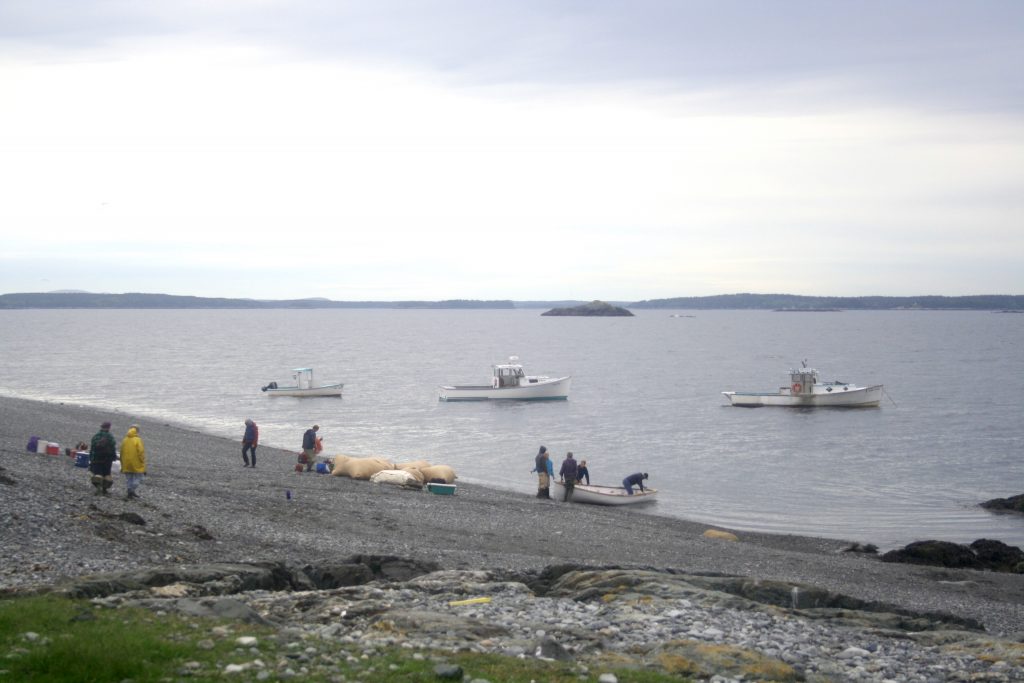
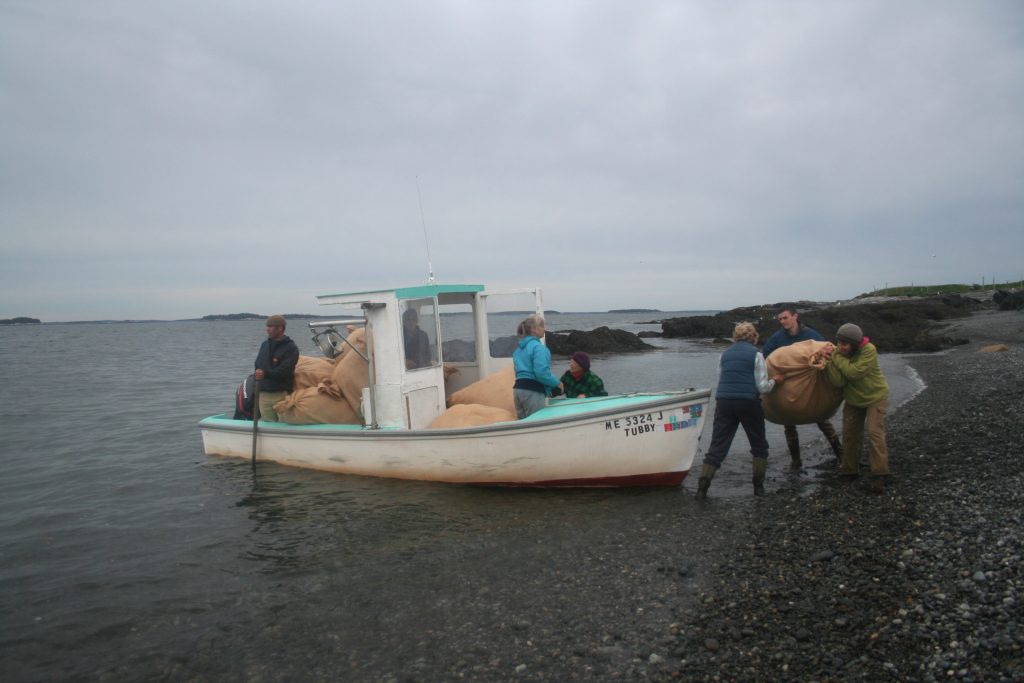

On Nash, the ewes and lambs are relieved to be reunited and happy to have the island to themselves again.
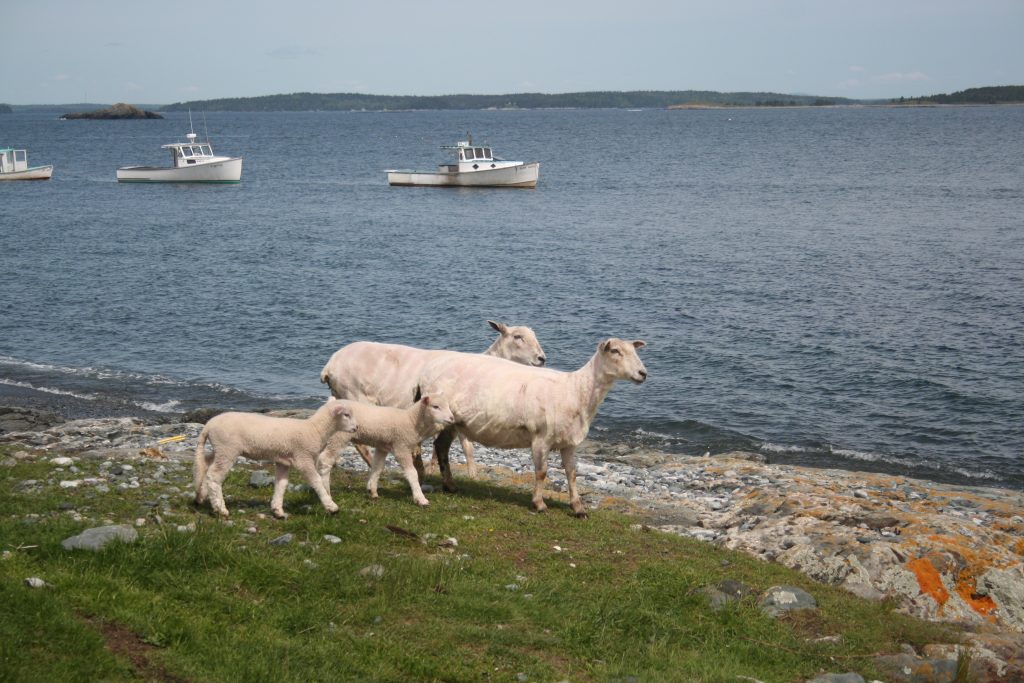
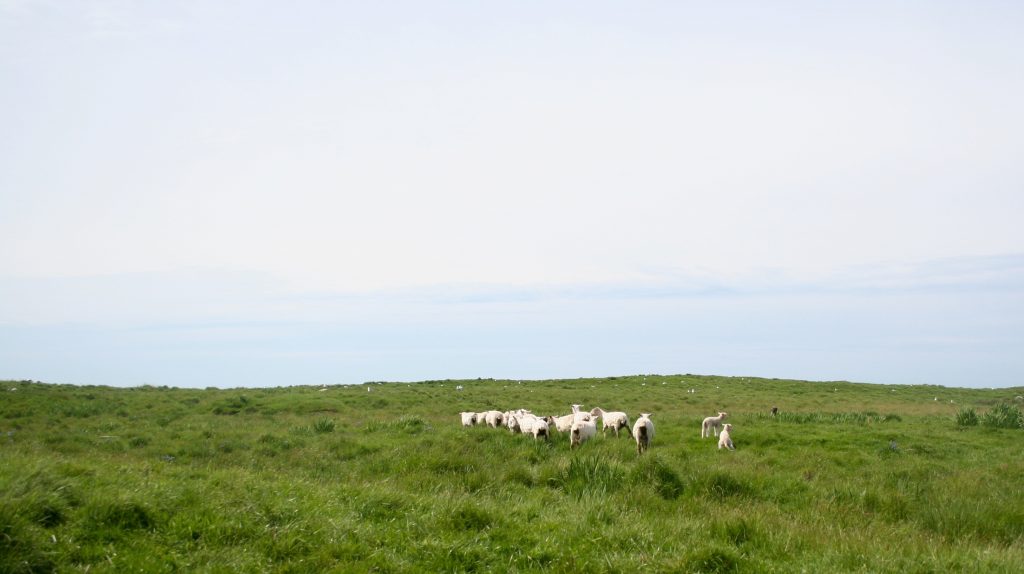
Find Nash Island wool turned into knitting yarn at Starcroft Fiber Mill in Columbia Maine (starcroftfiber.com). Each fleece will be gently washed in bio-degradable soap. Once dry the fibers are hand-fed into the carding, drafting and spinning machines. The finished yarns are hand-dyed by Jani in small batches with colors inspired by the coastal beauty of Downeast Maine.
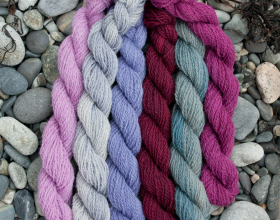
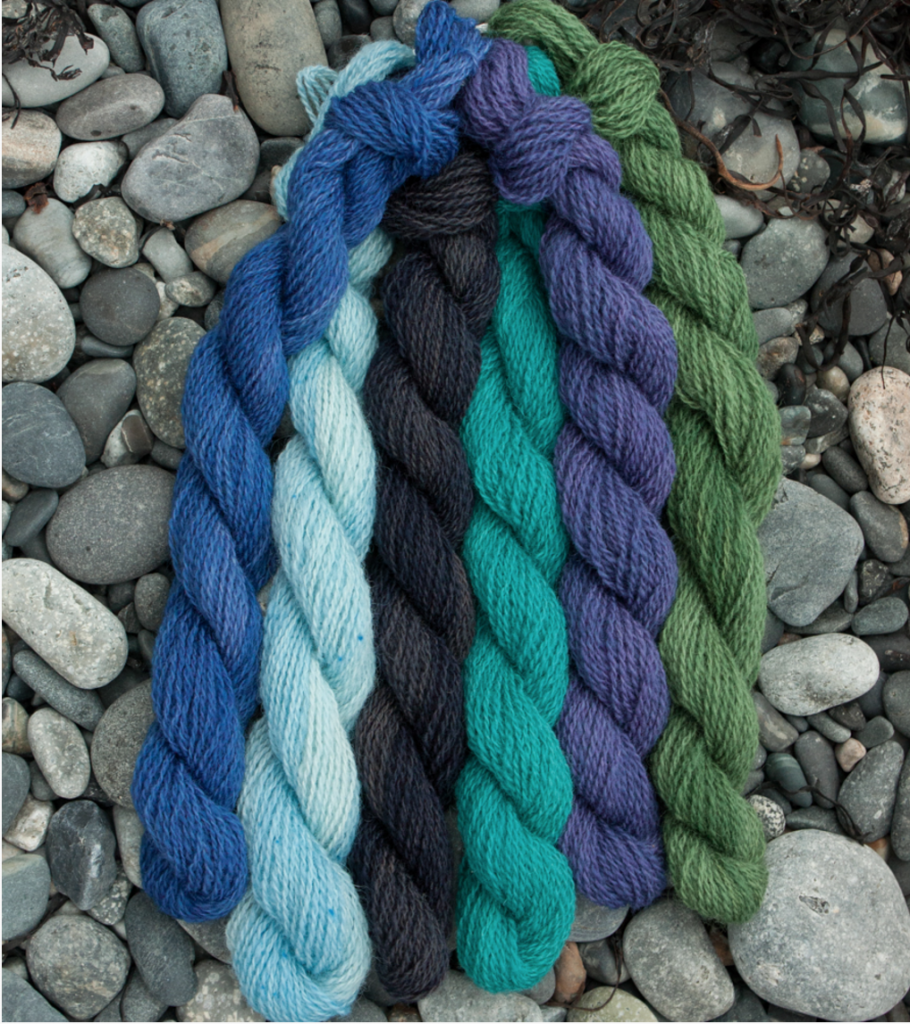
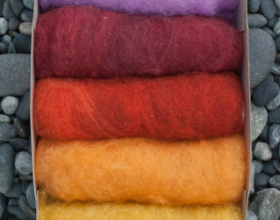
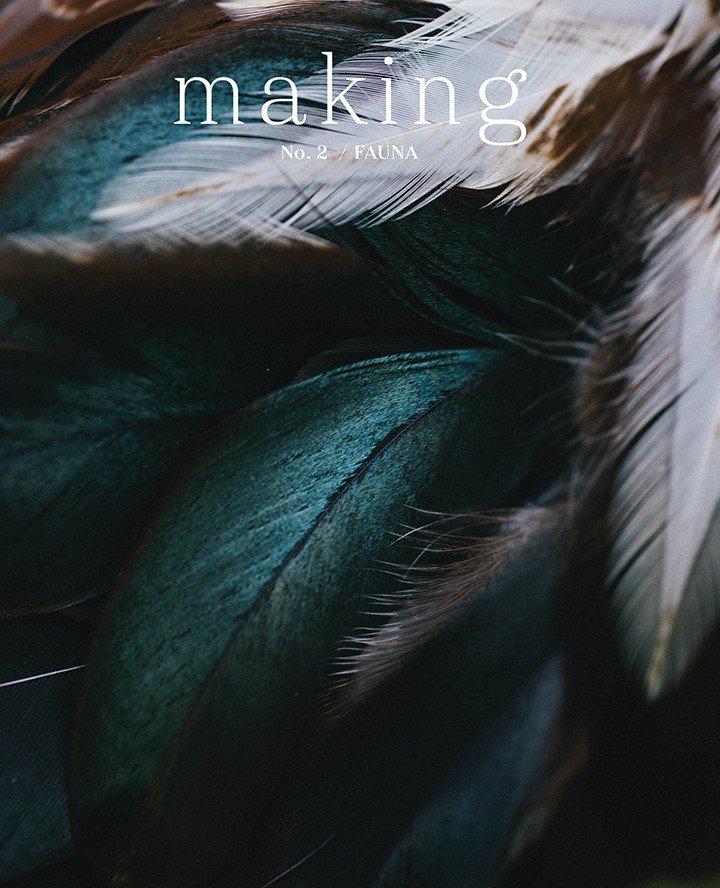
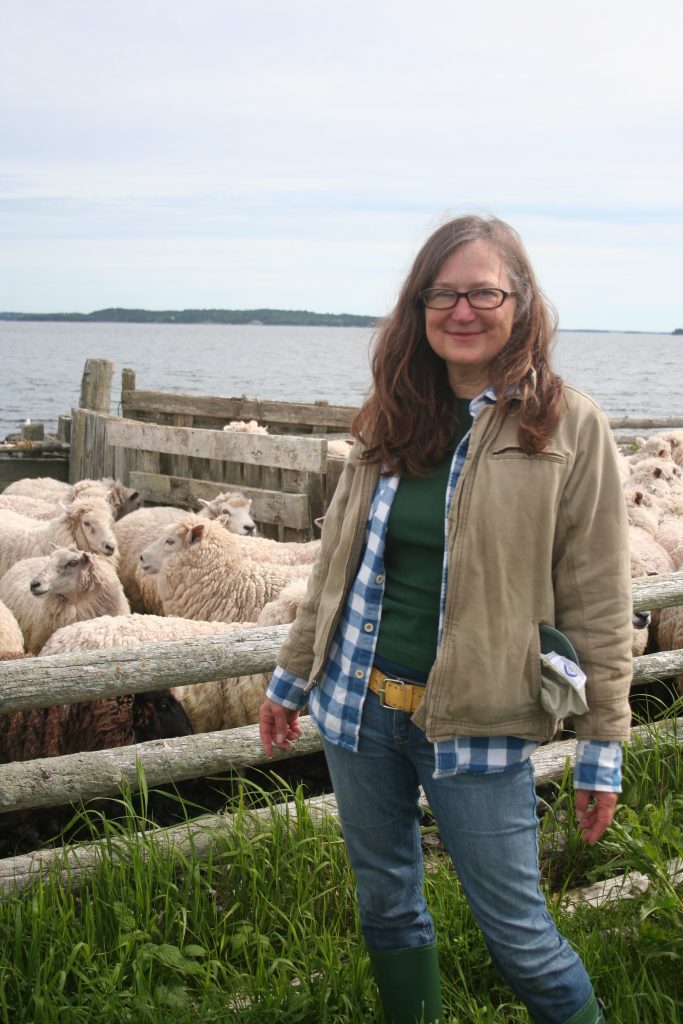
Just wanted to say how much I enjoyed your article AND such wonderful photos. l
❤️Maine
I am so glad you like the article – it is hard to describe just how special this place is – believe me it is even better in real life! Maine is the best!
I was so enchanted by your article that I went on ‘Find a Grave’ to see if Jenny’s resting place was there – which it was. Just enter ‘Genevieve Cirone.’ I ‘adopted’ her site to rid it of all advertising and added two photographs, one of her gravestone and one of her as a girl, with her sheep. If anyone is so inclined, she could be linked with her people, the Puringtons but I would not want to make an error.
Magical!
it is! the magic of wild sheep and the gulf of Maine!
How wonderful to see this tradition continuing. And I want some of that fleece!
Oh the fleece! As white as snow!
What a lovely article. Such hard work, but beautiful fleece. Thanks so much to all of you and the island sheep.
It is the nature of the place and the sheep that make their fleece so special. I feel a little bit of the magic when I knit with the wool…every year I think I should take up spinning again so I could make my own….
This seems so idyllic. Thanks for both the blog post and the opportunity to consider a job title I haven’t ever been formally given but have felt fit my job (not my current one, thankfully) – shit picker.
Ha! I am proud to be a pretty good shit picker. It is a pretty tricky job and is kinda gross, but ultimately satisfying!
Such a lovely article! I was transported, and thoroughly enjoyed the trip. Thanks very much!
It is my pleasure! It’s the best I can do considering it’s just not sustainable for very many humans to visit this magical place. Thank you!
Brought tears to my eyes! such a special article!
Hi Mary! I have been reading a lot of articles about sheep shearing day on Big Nash Island. Is it possible for people from out of state to volunteer and participate? I am living in New York but would happily drive out to Maine to experience the next shearing day, if it was a possibility!
Thank you! What an interesting article. My question is what do the sheep eat all winter?
There’s plenty of plants on the island for the sheep to eat. They also eat seaweed.
What a great article! Really fantastic. I have heard many things regarding sheep shearing on the Nash islands. No doubt, your tradition is really interesting. I am looking forward to being part of this great tradition someday. I have also found this resource Realcountry.co.nz useful and its related to what you are mentioning.
I’ve always wanted to visit New Zeland!
Hmm. NYTimes article & photos just this morning; Shearing Sheep, and Hewing to Tradition, on an Island in Maine.
June 8, 2020.
The latest of their “The World through a Lens” series.
Different photos, similar story, less focused on the wool, but does include a link to Starcroft, Nash Island wool.
Yes! My hands are in that NYT article. I’m skirting the fleeces, you can see a glimpse of my Nash Island sweater cuffs! Jani better get the mill cranking!
Anyone know what sheep breed they are?
Dorset Crosses
Very nice article. Thanks. Read a story about Kate Jones. Any chance I may purchase lamb from you? Thank You. Tom